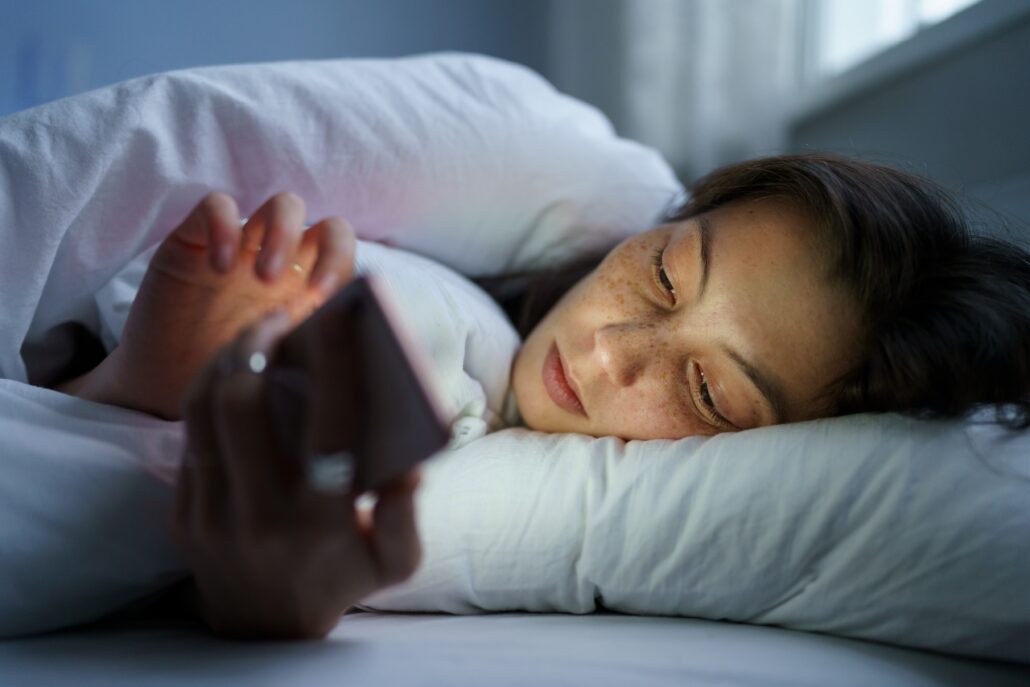
Americans have moved their clocks forward 1 hour in the spring and back again in the fall since the Standard Time Act of 1918. Though the dates on which we change time have varied since then, the law currently states Daylight Saving Time ends on the first Sunday in November. That means we’ll set our clocks back at 2:00 a.m. local time on November 4 this year.
You might look forward to this day, thinking, “Yes! An extra hour of sleep this weekend!” Not so fast. Time change can temporarily disrupt your circadian rhythm – the internal body clock that controls your natural cycle of sleepiness and alertness – which can lead to days of fatigue, limited productivity and difficulty concentrating.
One Hour Difference Can Become a Week of Struggle
How much of a difference does an hour make anyway? For many, it’s more than you may think. A Better Sleep Council survey revealed that 40% of U.S. adults say it takes them a week, sometimes longer, to get back to normal after resetting their clocks. Sorry, ladies. More women (46%) reported struggling with the time change than did men (32%).
A sleep study conducted by Liverpool John Moores University in England confirms what many of us are feeling. During the week following the autumnal time change, researchers found people woke up earlier, had more trouble falling asleep, and were more likely to wake up during the night. Instead of gaining an hour of sleep, the cumulative effect of these sleep issues actually suggests an overall loss of sleep. That’s an ironic – and unfortunate – plot twist when the fall time change actually affords us an additional hour in the day.
[av_sidebar widget_area=’Quiz Banner’ av_uid=’av-2ad5hk’]
Adjusting to the Time Change
Unless you live in Arizona, Hawaii, Puerto Rico or another U.S. territory that doesn’t observe Daylight Saving Time, you’ll have to deal with the time change and all the consequences that come with it. (You wouldn’t want to be an hour early to every appointment for the next 18 weeks, would you?)
However, you can prepare yourself with sleep strategies to combat the potential negative side effects of time change. Here are some simple tips that you’ll find to be a piece of cake compared to remembering which combination of buttons changes the time on your microwave:
- Boost your mood with pumpkin seeds. The tryptophan and magnesium in this tasty fall snack increase serotonin levels (lowering stress) and may help bring on better sleep. Just remember to avoid eating anything too close to bedtime.
- Establish a healthy bedtime routine. Just like you set aside time for work and exercising, you should schedule 7-8 hours of sleep into your daily calendar. Having a consistent bedtime routine will help you more efficiently transition from awake to asleep, so consider setting an alarm not only when it’s time to wake up but also when it’s time to go to bed.
- Wake up with the sun. Exposure to natural light helps boost your mood and increase levels of energy and alertness. So open the curtains as soon as you wake up and, if possible, go for a morning walk. If you’re up before sunrise, turn on plenty of bright light in your home.
- Shy away from long naps. Longer daytime naps could make it harder for you to get a full night’s sleep. Napping re-cues your body’s drive to sleep, so you won’t be as tired at night when you need to retire.
- Set a media curfew. Turn off all electronic devices at least 1 hour before you plan on going to bed. The blue light emitted from the screen suppresses your body’s production of the hormone melatonin, making it more difficult for you to fall asleep. It’s important to also turn your electronics to “night mode” even before you get ready for bed. The light from the screens will be yellow instead of blue and won’t distract you before bedtime.
- Keep a cool head and warm feet. Your bedroom should have a temperature between 65 and 67 degrees for comfortable sleeping.
- Do a bedroom checkup. The end of Daylight Saving Time is the perfect opportunity to talk to all family members about the importance of sleep and to take a good, hard look at your bedroom. Ask yourself, “Is the bedroom clutter-free, dark and conducive to sleep?” “Is your mattress providing you comfort and support?” You’ll be on your way to improving your sleep in no time.
The good news is that adjusting to turning the clock back is generally easier than when we return to Daylight Saving Time in March. (For tips to make the “spring ahead” time change easier, bookmark our earlier blog on the topic so you’re ready when that time comes.)
Learn how to adjust to the fall time change with ease, so you can get the right amount of zzz’s your body needs. #BSCSleepTips @BetterSleepOrg
Sources:
- https://www.timeanddate.com/time/change/usa?year=1918
- https://www.livescience.com/56048-daylight-saving-time-guide.html
- https://www.cbs17.com/news/a-look-at-the-health-affects-from-the-fall-back-time-change/1016973957
- https://www.health.harvard.edu/blog/daylight-saving-time-fall-back-doesnt-equal-sleep-gain-201311016836
- http://time.com/5005600/states-without-daylight-savings-time/
This blog provides general information about sleep and sleep products. The words and other content provided in this blog, and in any linked materials, are not intended to replace a one-on-one relationship with a qualified heath care professional. This blog should not be construed as medical advice or used to diagnose, treat, prevent or cure any disease or condition. If the reader or any other person has a medical concern, he or she should consult with an appropriately-licensed physician or other health care professional. This blog is not a substitute for professional medical advice, diagnosis or treatment, and should not be relied upon to make decisions about your health or the health of others. Never disregard professional medical advice or delay in seeking it because of something you have read on this blog or elsewhere on bettersleep.org. If you think you may have a medical emergency, immediately call your doctor or dial 911.



